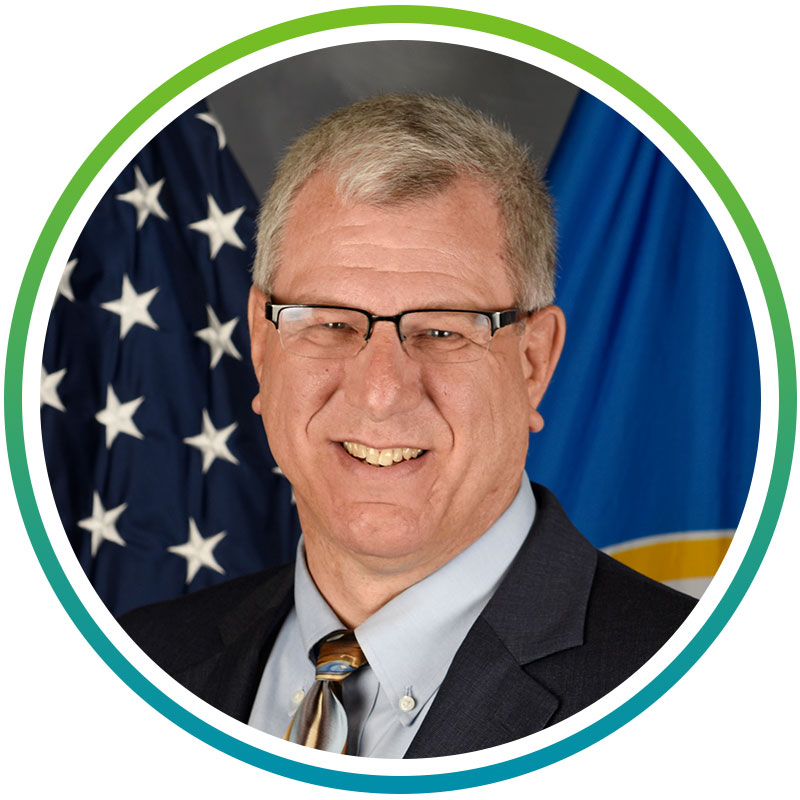Find the latest news from the Office of Accessibility. Once a month we will bring you tips, articles, and ways to learn more about digital accessibility. Want an easier way to stay informed? Subscribe to the Accessibility Newsletter!
The impact of digital accessibility in our workplaces
10/22/2020 9:00:00 AM

It has been 10 years since the State of Minnesota implemented a digital accessibility standard. In early September, we celebrated by interviewing several agency leaders on the standard’s impact on their agencies. We also heard from two other leaders who were instrumental in defining the standard and putting it into place.
Now, in celebration of the 75th anniversary of National Disability Employment Awareness Month (NDEAM), we went out into the field to get the thoughts and reactions of people with disabilities. We wanted to know from state employees if they saw an impact from the accessibility standard on their work. And from those who didn’t work at the state, we wanted to know if they saw any improvements in their abilities to interact with state services.
Our interviewees represent a wide range of roles and disabilities. Here are their names and how they chose to identify themselves:

Anne Sittner Anderson, Director of Communications, Minnesota Commission of the Deaf, DeafBlind and Hard of Hearing (MNCDHH). She identifies as deaf and communicates in American Sign Language as well as spoken and written English.

David Andrews, Chief Technology Officer, State Services for the Blind. He uses a screen reader and a Braille display.

Steve Jacobson, Data Quality Analyst. He uses a screen reader with speech and a Braille output.

Lisa Larges, Outreach and Marketing Coordinator, State Services for the Blind. She uses several different screen reading software programs to do her work.

Jamie Taylor, Artist. She is DeafBlind.

John Tuma, Public Utilities Commissioner. Tuma is dyslexic and an auditory learner.
When asked how long after the standard’s enactment it took for them to notice an impact our interviewees’ answers depended on whether they were working for the state at that time.
The first change for many was an increased awareness. While Steve Jacobson is not a state employee, he has been on several state-related committees including the first Technology Accessibility Advisory Committee. He noted, “There was some impact even before the standard was adopted because of the presence of the law that defined the need for a standard.” David Andrews adds, “One of the main benefits of the standard is that it increased the awareness of accessibility, and its need.”
Moving from awareness to substantive change happened fairly quickly. Lisa Larges, who started working for the state in 2013 observed, “By then, many parts of the standard were being implemented.” However, as you may expect, some changes were easier than others. Lisa noted, it “would happen fairly often that I would need to access something using third-party software that hadn’t fully been vetted for accessibility. In the seven years that I have been with the state, there has been a steady and gradual increase in accessibility.” For example, the “phone line at my office desk, with its inaccessible digital display is now accessible; the multi-function machine, with its screen-driven input is now accessible.”
Like Larges, John Tuma joined the state after the standard’s establishment, in 2015. He praised the Minnesota IT Services (MNIT) staff as “very helpful.” As a dyslexic and an auditory learner, he was accustomed to using his Mac at home to support text-to-speech output. He was also an early adopter of Dragon Naturally Speaking as a tool to dictate instead of type. He was able to install Dragon on his work computer, but early iterations of speech-to-text technology were less satisfactory. When the Office of Accessibility set up a pilot license of Read & Write, he was one of the first to take advantage of the opportunity.
He noted that as people became more aware of the tools for people with disabilities they often became interested in using the tools themselves. For example, when he worked for a law firm, some of Tuma’s colleagues had administrative assistants who typed their letters and documents for them. But today, people must “create their own material.” Tuma’s use of Dragon encouraged them to use it themselves.
Andrews observed that the increased awareness has resulted in more people discussing accessibility – even if they don’t claim a need for it themselves. “Back in the 1990’s I would be the only one asking about accessibility in meetings. Now there are lots of people doing so, and it is increasingly becoming a part of our testing and procurement processes.”
Larges concurs, but points out that the path wasn’t always smooth. “As the standard rolled out, there was also a bit of frustration on the part of some staff who suddenly faced a new layer of complexity as they did their work. All of a sudden, they had to think about:
Over time, the messaging about accessibility has become more upbeat and positive, and state employees have had the chance to see what a difference it can make, and these factors have led to a much more favorable attitude about accessibility.”
Jamie Taylor agreed, noting that there was “a difference right away but it was not uniform nor consistent nor even. Sometimes an entity would seem to forget until I reminded them of the standard.”
Anne Sittner Anderson stated, “In my heart, I believe that state employees want their work to be accessible and equitable. I think many are overwhelmed when they try to learn how to do it because the learning curve is vast and steep. I consider myself well-educated on communication access, but had to work hard to feel competent in document accessibility.”
One of the first areas where the standard made an impact was in accessible documents. The standard’s implementation team built an online training program on creating accessible Word documents in 2012, which was updated in 2017. It continues to be heavily used. In addition to being displayed on MNIT’s public website, the training is in the process of integrating into agencies’ learning management systems. A number of state agencies also supported classroom training programs on the topic.
Larges observed, “Slowly, the word is getting out about this resource, and it’s making a difference. There’s a greater awareness about checking accessibility as one step in finishing a document. An added benefit is that document accessibility improves the quality of documents for everyone.”
Andrews added, “I used to regularly see text boxes and scanned/image documents plunked down in Word documents. While I can’t say it never happens, it is pretty rare. Likewise, I see fewer PDFs that just contain an image, instead of text.”
Tuma agreed, stating that his agency’s “staff is very good about preparing documents with readable text.” Sometimes they have to incorporate old, scanned PDFs into the reading material, and they are aware that copying the PDFs creates a picture so they take pains to convert the picture to real text so his software can read it.
Jacobson observed that even though he is not a state employee, “If I have a problem with a document or a website, I find that any difficulties I have are taken seriously, and some means of providing access is given. However, the need to find accessible alternatives grows smaller all the time as the mainstream approaches are generally accessible.”
Jamie Taylor also noted the improvement in PDFs. Previously, “they would often be images – scanned with no structure, no text for a screen reader to grab. Now a lot of forms are not only readable but also fillable online... No extra third-party software needed.”
Within a few years of the digital accessibility and usability standard’s adoption, state agencies updated their websites to be more accessible and usable. The executive branch websites span over 70 agencies and nearly 2 million pages – now more accessible than ever.
As Jacobson noted, “Over the past five years at least, I generally go to a state website assuming that I am going to be able to navigate the site successfully. It is one of the larger entities I visit where I make that assumption. Of course, I don't visit nearly every site and know that there are likely sites that can be improved, but I believe it is fair to say this is a change for the better over the past ten years.”
Larges pointed out that “as a concerned Minnesotan, apart from my job with the state, every day I visit the COVID-19 Situation Update page of the Department of Health. Much of the data presented there is in graph form, which my screen reading software can’t interpret very well. However, almost every graph is accompanied by a table, and these tables are accessible. I am exceedingly grateful that the designers of this website created a site that gave sighted visitors a way of quickly getting information, but also included a way for nonvisual visitors to have access to the same info.”
In addition to accessible website pages, another challenge has been accessible videos. Sittner Anderson recalled that in her first year working for the state (2015), she received an internal link for state employees only to find out that the related videos were not captioned. “Of course, I followed up and advocated for access. I remember being surprised because most state videos were captioned. Raising the bar continues to be a goal.”
Everyone agreed that there are far fewer technology barriers today than existed ten years ago. Tuma noted that he’s “seen substantial, continued improvement. I feel much more confident that I could find the information I need in a format that I can access today than 10, 15, 20, years ago.”
Taylor stated, “There are much fewer barriers than in 2010. I can more easily get around and do things with the rest of my life just like everyone else.”
While better, modern technology may be responsible for some improvements, they felt that the standard – and the law that gave rise to that standard – played a role. Larges observed, “For me, it’s nearly impossible to convey the importance of rules and legislation like these standards. It used to be pretty common that the only barrier between a highly qualified and motivated job seeker and a job was inaccessible technology. Having the same access to this tech makes it possible for me to do my job.”
Andrews agreed, noting, “The standards are a great thing! They give developers and others some tangible things they can do and provide a means for making improvements in future updates.”
This is not to say that our interviewees believe more change is not needed. Andrews noted that while documents and websites were generally better, large, statewide systems continued to present a challenge. One vendor for a statewide system “has fixed many things, but they are in future releases that we won’t get for a couple years. Sometimes it is two steps forward, one step back. Things get more complex, new web techniques and frameworks are developed, and we and our AT [assistive technology] must adjust.”
Jacobson concurred, pointing out that as a volunteer to test the state’s job application system, “I saw firsthand how there was a tendency to accept a promise from the software provider to make something accessible as being equivalent to the software being accessible now. We need to work toward minimizing this.”
Most of the interviewees noted the importance of empathy – of creating an environment that encouraged people to personally understand the value of accessibility. Sittner Anderson observed, “I think having more colleagues with disabilities is a way to push change for the better through in a natural way. I hope the state continues to increase the number of state employees with disabilities.”
Larges pointed out, “The Accessibility Standard is only as good as its implementation. All of us in state government are still learning the important discipline of remembering inclusion and accessibility at the start of a project. The more that this becomes second nature to all of us, the more able we will be to serve all of Minnesota as One Minnesota!”
Would you like to learn more about the accessibility work being done by Minnesota IT Services and the State of Minnesota? Once a month we will bring you more tips, articles, and ways to learn more about digital accessibility.
Accessibility